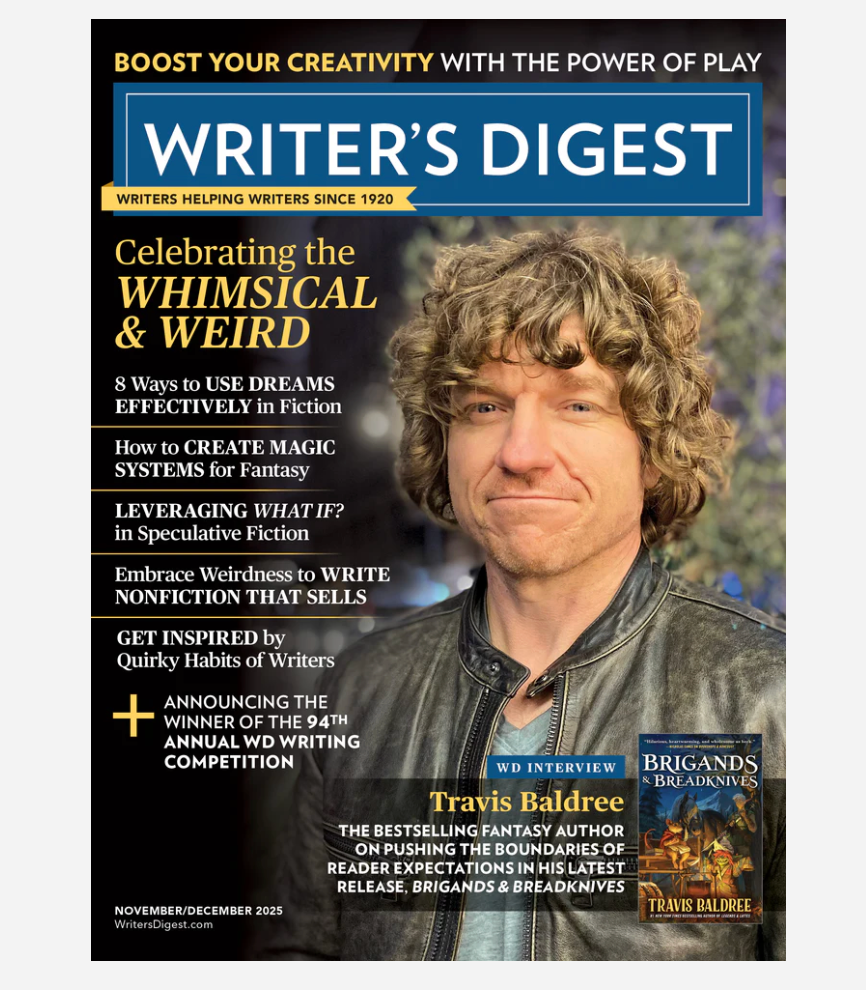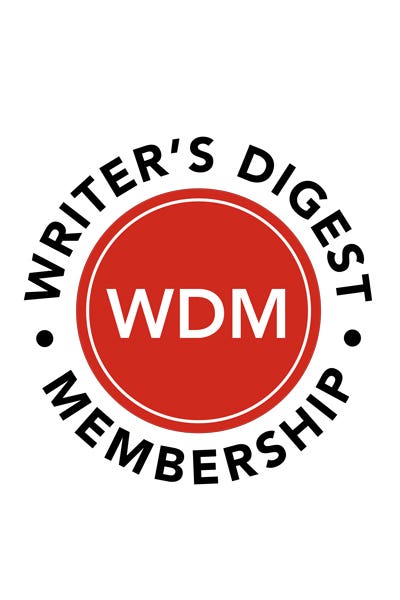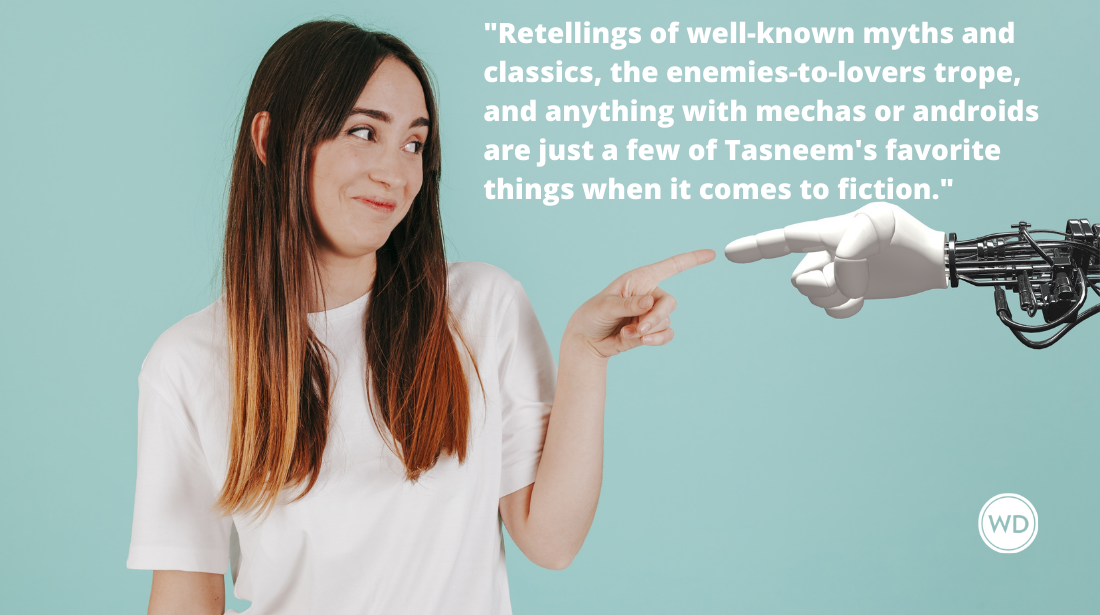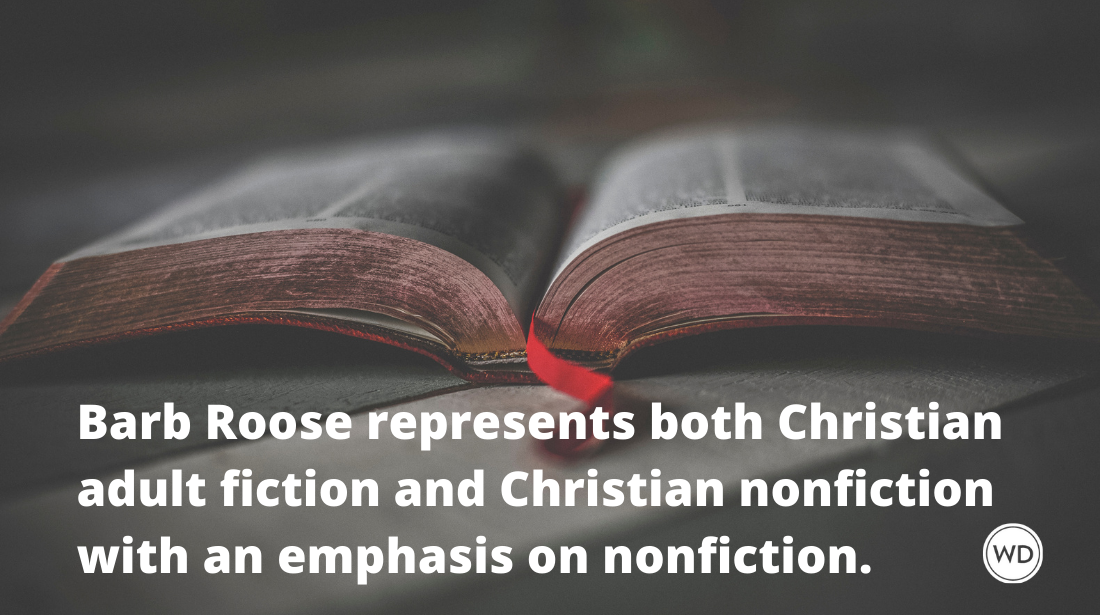Agent Advice: Jen Rofe of Andrea Brown Literary
The best way to get advice from literary agents is to go directly to the source. In this post, get agent advice from Jen Rofe of Andrea Brown Literary.
“Agent Advice” (this installment featuring agent Jen Rofe of Andrea Brown Literary) is a series of quick interviews with literary agents and script agents who talk with Guide to Literary Agents about their thoughts on writing, publishing, and just about anything else. This series has more than 170 interviews so far with reps from great literary agencies. This collection of interviews is a great place to start if you are just starting your research on literary agents.
This installment features Jen Rofe of Andrea Brown Literary. Jennifer is co-author of the picture book Piggies in the Pumpkin Patch (Charlesbridge). Jennifer earned a BA in English with a minor in Social and Ethnic Relations from UC Davis and has a background in secondary education.
She is seeking: children's fiction ranging from picture books to young adult. Middle grade is Jennifer's soft spot and she's open to all genres in this category, especially the tender or hilarious. As for YA, Jennifer is drawn to contemporary works; dramatic or funny romance; and urban fantasy/light sci-fi. In terms of picture books, early readers, and chapter books, she is interested in character-driven projects and smart, exceptional writing. Jennifer also enjoys how-to and sports-related nonfiction.
GLA: How did you become an agent?
JR: I was a middle school teacher, but I was interested in educational publishing. Then I met Andrea Brown and that changed everything.
GLA: What's something coming out now you repped that you're excited about?
JR: I'm always excited when my clients' books are being released; they're all great books! But a project that I'm especially excited about is Crystal Allen's debut How Lamar's Bad Prank Won a Bubba-Sized Trophy. Kristin Daly at Balzer & Bray (HarperCollins) acquired this title at auction in a six-figure deal, and it will be released in February 2011. This laugh-out-loud hysterical middle grade is about 13 year old Lamar Washington who decides to spend the summer changing his image from dud to stud. He makes a cringe-worthy mess of it.
GLA: You seek MG and YA. Any early reader or picture books?
JR: Yes, I'm interested in picture books and early readers, but they have to be exceptional and unique. I love smart, beautiful picture books like the E.B. White Read Aloud Honor book Once Upon a Twice by my client Denise Doyen (illustrated by Barry Moser). I also like character-driven picture books in the vein of Olivia, and I'm open to character-driven early readers and chapter books.
GLA: Is there a difference between "early reader" and "chapter books"?
JR: In a nutshell: Early Readers = Frog and Toad and Elephant and Piggie. Chapter books = Judy Moody and Ivy and Bean. Think of the stages of development in this order: picture books lead to early readers, which lead to chapter books (which lead to middle grade....).
GLA: Concerning MG and YA, you take everything, but is there anything more you can tell us about what you are always looking for?
JR: In terms of middle grade, I like it all—classic and timeless, funny and zany, literary and commercial. I have a soft spot for middle grade and am always on the lookout for strong manuscripts in any genre.
I'm much pickier with YA. I find so much YA to be angst-y and dark, and I'm not up for reading these stories every day. That being said, I'm interested in contemporary YA, commercial or literary; dramatic or funny romance; and urban fantasy/light sci-fi. I'd especially like to see something mind-blowingly smart; something layered and complex and unexpected. Also, I'm presently obsessed with the DAIRY QUEEN series and would love to read something in a similar vein.
As for what I see too much of: Paranormal romance with a love triangle.
GLA: Let's talk about multicultural stories. Judging by your past sales, I would say these catch your eye. Are they tough sells? What types of stories are under-represented and in demand? Does your love for this category stem from your schooling and studies?
JR: I minored in Social and Ethnic Relations with a focus on multicultural literature, so for various reasons—perhaps including my personal background and my growing up in the diversity of Los Angeles—I am drawn to this category. It's important to point out, however, that I am typically drawn to stories where a character's ethnicity is not the "issue."
In my experience, these are not tough sales, but sometimes finding the audience can be trickier. I think there's a need for more multiculti-contemporary books, as opposed to multiculti-historical. My client, Christina Diaz Gonzalez, spoke about diversity in children's literature at the SCBWI Los Angeles conference, and she made the excellent point that the population of the US is changing and there are children in need of books that honestly depict their experiences. That is to say, books that aren't just about race being an issue.
GLA: Tell me about some Chapter 1 cliches that you come across from time to time that immediately make you stop reading.
JR: The "information dump" is one—paragraphs of information about the protagonist, the protagonist's parents, background information about the protagonist's situation. Often, this information is unnecessary, and if it is necessary, a blend of telling and showing, along with a measured unfolding of information, is a stronger approach.
Another is starting the first chapter with the wrong action. Writers are often instructed to start a story in the middle of the action, but it's important that it be the right action. For example, I recently read a manuscript in which the protagonists embark on a dangerous outing in the first chapter. But since I didn't have a clear sense yet for the significance of this outing, the action was undermined and I wasn't invested in the outcome. It was a crucial scene, but the author needed to back up and start with completely different action that placed me more firmly in the world of the story.
Finally, I stop reading when the first chapter starts with the protagonist saying something like, "Hi, my name is (fill in the blank)."
GLA: I see that three of your recent sales have to do with WW2 in some way. Do you have an affinity for historical tales?
JR: This is an interesting coincidence that I don't know how to explain! Funny timing. I'm interested in historical fiction, provided there are multiple hooks, but I wouldn't say I have an affinity for it.
GLA: Concerning YA submissions you've received that really are adult, and vice versa, where are people getting confused when labeling their work YA vs. adult if the protagonist is in their teens.
JR: I don't typically receive this type of submission. It's more common that I see submissions for children's books where there is a child protagonist, but the story is really about the adult characters. What's more common is that an author believes s/he has written a YA, when in fact, it's a middle grade, and vice versa. It's safe to say that at every conference I attend where I do one-on-one meetings, I end up convincing someone that they're writing in the wrong category. What are the clues? Sometimes it's that the characters feel more mature than they are; sometimes it's the content; and sometimes it's the writer's natural voice. By doing some research at a bookstore or library, writers can better determine what age group they're writing for.
GLA: Best way to submit to you?
JR: Our guidelines can be found at the agency website. In a nutshell: Send me an email at jennifer[ at] andreabrownlit[dot]com with the word QUERY in the subject line. Include in the body of the e-mail a query letter followed by the first 10 pages of your manuscript. If it's a picture book, include the entire manuscript. No attachments, please! I won't open them unless I request them.
GLA: Will you be at any upcoming writers conferences where writers can meet/pitch you?
JR: My next conference will be the agency's annual Big Sur Children's Writing Workshop in December. This is an excellent workshop consisting of small-group intensives and one-on-one sessions. Editors on staff this year include Lisa Sandell, Executive Editor at Scholastic Press; Allyn Johnston, VP & Publisher of Beach Lane Books (Simon & Schuster); and Melissa Manlove, Editor at Chronicle Books. That the workshop is held in stunning Big Sur, California, doesn't hurt.
GLA: Something personal about you writers may be surprised to know?
JR: Secretly, I would like to be a cowgirl. A cowgirl who owns a bakery.
GLA: Best piece(s) of advice we haven't discussed?
JR: Here are my latest catchphrases:
1. "Turn it on its head." This is what I say to my clients and other authors when discussing how to take a project to the next level. How can you turn the story, or a specific plot line, on its head to make it more unexpected and interesting?
2. "Be flexible and patient." Two books that I sold this year took me, literally, three years to sell. I was entirely convinced that both of these books would sell in time, and I was right. My tenacity, coupled with the authors' flexibility (in regards to revisions) and patience, helped make it happen. Both books went to excellent houses, too. So, be flexible. And patient.
Chuck Sambuchino is a former editor with the Writer's Digest writing community and author of several books, including How to Survive a Garden Gnome Attack and Create Your Writer Platform.







